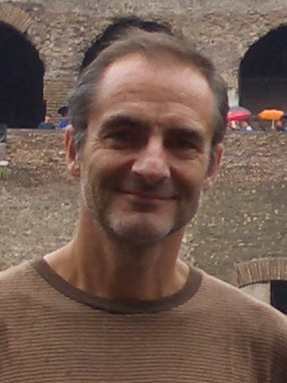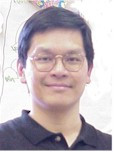时间:2010年1月18日(周一)上午9:00-11:00
地点:邯郸校区物理楼521室
题目:Quo vadis, quantitative ultrasound of bone?
报告人:Pascal Laugier教授
题目:Resolution Study of Ultrasound Reflections in Bovine Vertebral Bones In-Vitro
报告人:Lawrence H. Le副教授
欢迎各位老师和研究生参与学习交流,谢谢!
2010-01-11
Quo vadis, quantitative ultrasound of bone?
Pascal Laugier
Laboratory of Parametric Imaging, University Paris VI, Paris, France
Abstract:
 Although it has been over 20 years since the first recorded use of quantitative ultrasound (QUS) technology to predict bone fragility, the field has not yet reached its maturity. QUS have the potential to predict fracture risk in a number of clinical circumstances and has the advantages of being non-ionizing, inexpensive, portable, highly acceptable to patients and repeatable. However, the wide dissemination of QUS in clinical practice is still limited and suffering from the absence of clinical consensus on how to integrate QUS technologies in bone densitometry armamentarium. There are a number of critical issues that need to be addressed in order to develop the role of QUS within rheumatology. These include issues of technologies adapted to measure the central skeleton, data acquisition and signal processing procedures to reveal bone properties beyond bone mineral quantity and elucidation of the complex interaction between ultrasound and bone structure. In this presentation, we review recent developments to ultrasonically assess bone mechanical properties. We conclude with suggestions of future lines and trends in technology challenges and research areas such as new acquisition modes, advanced signal processing techniques, and models.
Although it has been over 20 years since the first recorded use of quantitative ultrasound (QUS) technology to predict bone fragility, the field has not yet reached its maturity. QUS have the potential to predict fracture risk in a number of clinical circumstances and has the advantages of being non-ionizing, inexpensive, portable, highly acceptable to patients and repeatable. However, the wide dissemination of QUS in clinical practice is still limited and suffering from the absence of clinical consensus on how to integrate QUS technologies in bone densitometry armamentarium. There are a number of critical issues that need to be addressed in order to develop the role of QUS within rheumatology. These include issues of technologies adapted to measure the central skeleton, data acquisition and signal processing procedures to reveal bone properties beyond bone mineral quantity and elucidation of the complex interaction between ultrasound and bone structure. In this presentation, we review recent developments to ultrasonically assess bone mechanical properties. We conclude with suggestions of future lines and trends in technology challenges and research areas such as new acquisition modes, advanced signal processing techniques, and models.
Resolution Study of Ultrasound Reflections in Bovine Vertebral Bones In-Vitro
Lawrence H. Le
Departments of Radiology and Diagnostic Imaging and Biomedical Engineering, University of Alberta, Edmonton, Canada,
Abstract:
 Spinal fusion is the most common surgery to correct severe spinal deformities. It involves insertion of screws through the pedicles of vertebrae. Due to the serious neurological or vascular injuries caused by cortical perforation of pedicle screw insertion, an ultrasound imaging method has the potential to vision the spinal vertebrae and provide real-time guidance for the insertion. The pedicle of a vertebra comprises of two components: cortical shell and cancellous core. The thickness of the cortical shell is approximately 1.5 mm and the cancellous core is about 5 mm. Due to the small target size, good resolution of the ultrasonic beam is required to see the reflections from the bone interfaces. The objective of this preliminary study is to investigate the optimal frequency required to resolve the reflections. An immersion pulse-echo experiment was set up to study a bovine spinous process in-vitro. Two ultrasound frequencies (3.5 MHz and 5.0 MHz) were considered. The results of our preliminary study are very promising. All interfaces are clearly identified for both frequencies. Strong reflection signals are obtained when the beam is normal to the interface. Otherwise, the echoes are weak or nonexistent. Thickness measurements between interfaces are comparable with those from the micro-CT image.
Spinal fusion is the most common surgery to correct severe spinal deformities. It involves insertion of screws through the pedicles of vertebrae. Due to the serious neurological or vascular injuries caused by cortical perforation of pedicle screw insertion, an ultrasound imaging method has the potential to vision the spinal vertebrae and provide real-time guidance for the insertion. The pedicle of a vertebra comprises of two components: cortical shell and cancellous core. The thickness of the cortical shell is approximately 1.5 mm and the cancellous core is about 5 mm. Due to the small target size, good resolution of the ultrasonic beam is required to see the reflections from the bone interfaces. The objective of this preliminary study is to investigate the optimal frequency required to resolve the reflections. An immersion pulse-echo experiment was set up to study a bovine spinous process in-vitro. Two ultrasound frequencies (3.5 MHz and 5.0 MHz) were considered. The results of our preliminary study are very promising. All interfaces are clearly identified for both frequencies. Strong reflection signals are obtained when the beam is normal to the interface. Otherwise, the echoes are weak or nonexistent. Thickness measurements between interfaces are comparable with those from the micro-CT image.